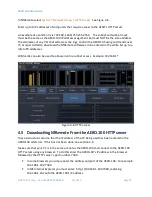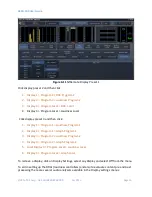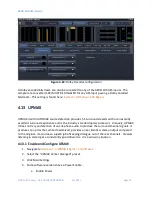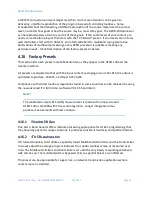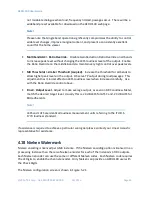
AERO.100 User Guide
©2016 TLS Corp. ALL RIGHTS RESERVED
Oct 2016
Page 45
Select the Clock Reference drop and down a select a reference. Note that if Embedding is
enabled the Clock Reference drop down will show SDI and be grayed out indicating that it
cannot be changed. To ensure that audio is embedded to the very tight timing tolerances
required the AERO uses the SDI source itself as the timing reference when embedding is
enabled.
4.10.7
4.10.7
4.10.7
4.10.7
Configuring Video Compensation Delay
Configuring Video Compensation Delay
Configuring Video Compensation Delay
Configuring Video Compensation Delay
The included video compensation delay can help re-time audio and video/ancillary data signals
from SDI Input to SDI Output to match audio processing latency. Normal practice is to set the
video delay to the next whole video frame value that is greater than the total latency of the
audio processing and any Dolby encoding that may also be done in the AERO.100.
Rough timing is set via the Delay control (milliseconds), and the Fine control can adjust to the
microsecond. Once video delay is set, A/V lipsync can be accomplished in the I/O Menu using
the Audio Delay for each processor output pair. A separate delay for the Dolby encoder output
allows both LPCM and Dolby encoded audio to be embedded with proper lipsync.
To set the Video delay:
1.
System > I/O Setup > SDI Video Delay
2.
Use the coarse adjustment to set delay to 264ms
a.
From specifications: Processing Latency 180ms + Dolby Digital encoding 64ms =
244ms.
b.
Nearest whole frame delay greater than 244 ms is 8 frames = 264 ms.
c.
Calculations using 30fps/.33 sec per frame
3.
Using a wave form analyzer with timing display the coarse and fine adjustments can be
used to match the AERO.100 video output to house sync.
See Figure 4-17 below.


